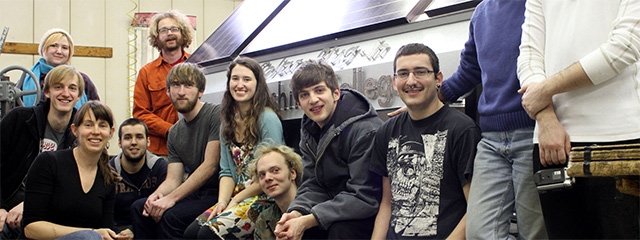In the series “Student Voices,” current students write about the reasons they chose Hampshire and how our educational model works from their perspective.
Hampshire College has been awarded the 2015 Community Engaged Classification by the Carnegie Foundation for the Advancement of Teaching. The classification is awarded to colleges that “demonstrate significant engagement with and contribute to important community agendas.” It is determined by a thorough, yearlong application process, which follows community engagement in the college’s curriculum. Hampshire is one of 360 schools that have achieved this classification. Less than one-tenth of U.S. colleges have this designation.
Community-based learning is an essential part of a Hampshire education. Division I students have a Campus-Engaged Learning requirement (CEL-1), which must involve collaborative learning and take place on campus and/or enhance campus life. Students document their experience and write a reflection about it at the end of Division I. During Division II, students complete a Community Engagement and Learning activity (CEL-2), which requires students to build community either on or off campus. As with CEL-1, students write a reflection on their experience when they complete the second Division. CEL-2 projects can include internships, apprenticeships, courses with a community-based learning core component, or mentoring (such as tutoring or being a teaching assistant).
My participation in CEL activities has been very positive, which has helped me feel like an important part of the Hampshire community, and has given me skills that I can take into the world outside Hampshire as well. For my CEL-1, I participated in Shake n’ Bake, a student group where we baked desserts and read Shakespeare. It was a fun way to meet other students and to read plays by Shakespeare that I’d never read—some of which I’d never even heard of before. As a shy person, it also helped me to face my fear of participation, since everyone was encouraged to read at least one role out loud.
For my CEL-2, I taught a course through EPEC (the Experimental Program in Education and Community). It was a writing class specifically about crafting a novel and managing the many challenging components—such as outlining, drafting, world-building, pacing, and character development. Through teaching the course, I was able to build community with other creative writing students, and to pass on some of the knowledge I have learned in my college experience so far.
At Hampshire, where education is focused a lot on individual work, it’s important to also encourage community and collaboration. The CEL program encourages students to participate in a wide variety of activities to help, support, and inspire each other, and to bring Hampshire values into the greater community.
It is an honor for the College to be recognized for these efforts by the Carnegie Foundation, and as a student here I can confirm that Hampshire deserves the classification.







Pingback: Another Student Voice: Campus-Engaged Learning at Hampshire College
It’s great that Hampshire University encourages team work! In real work environment it’s important not only to be an expert, but to know how to collaborate with other people successfully.
Yes, Hampshire deserves the classification! Congrats 🙂
Pingback: Student Voices: Student Groups and Activism on Campus